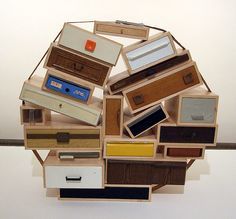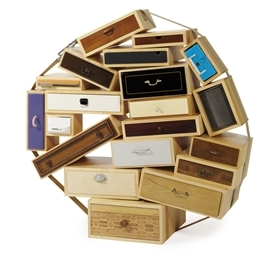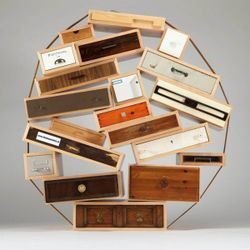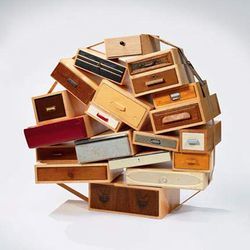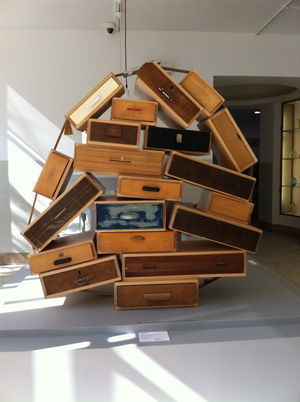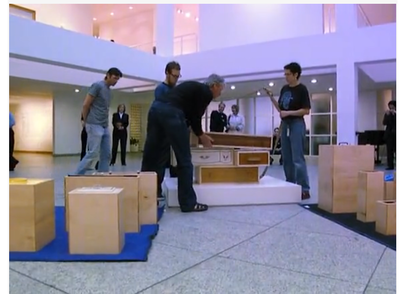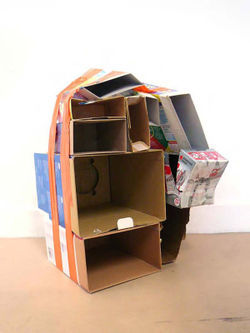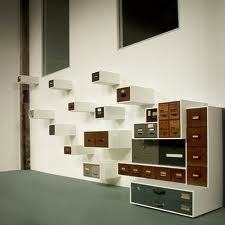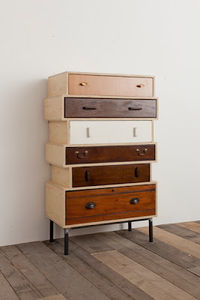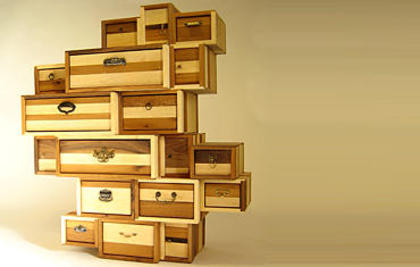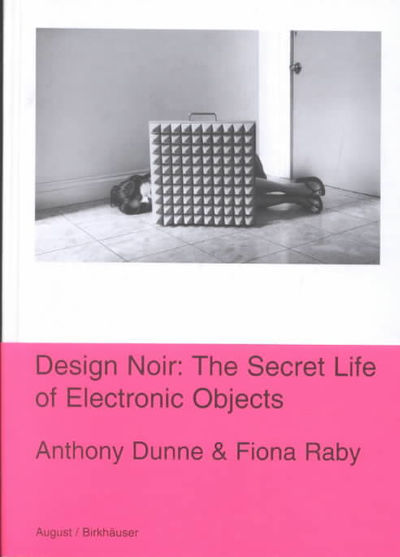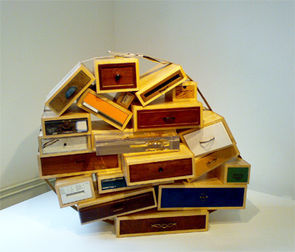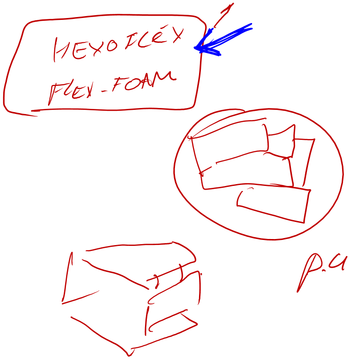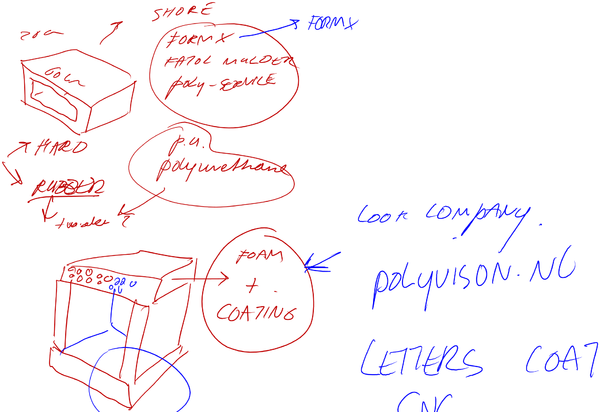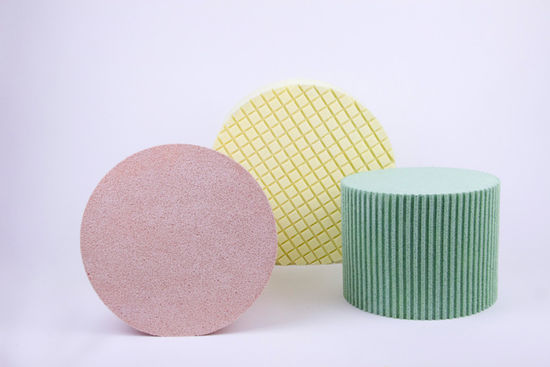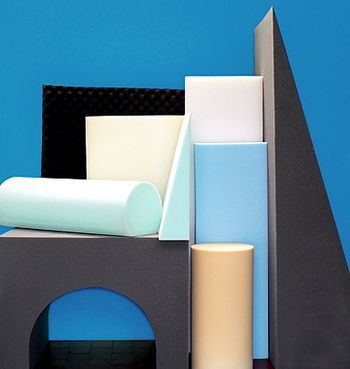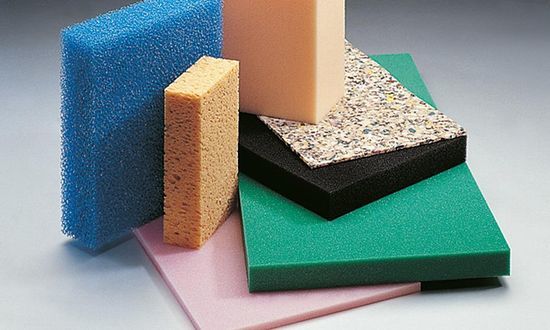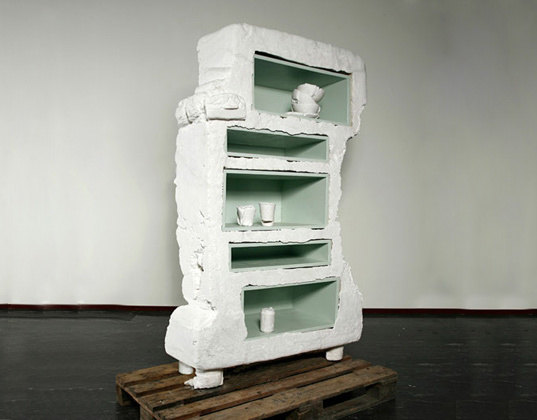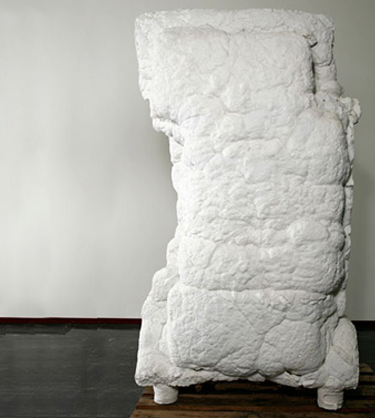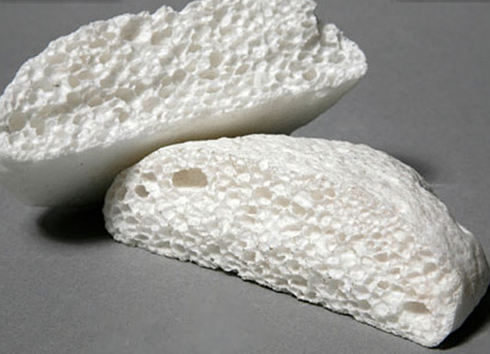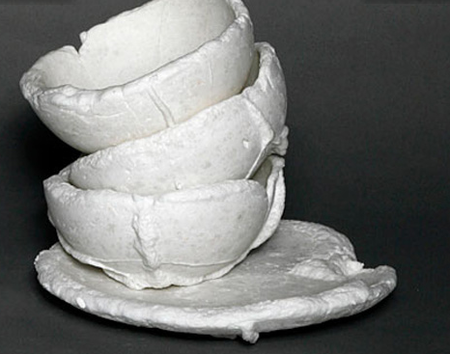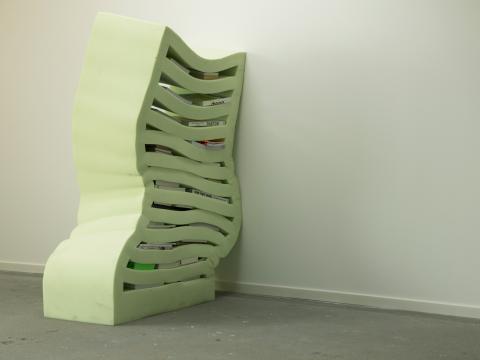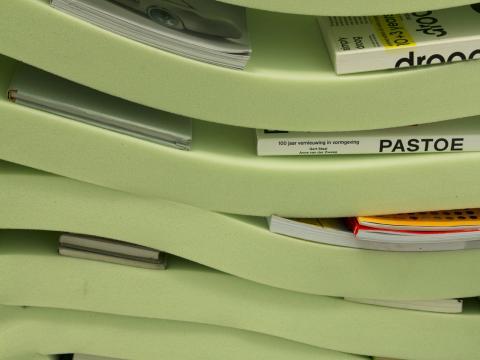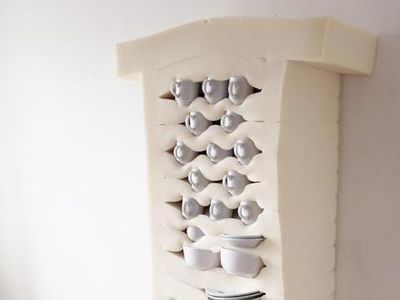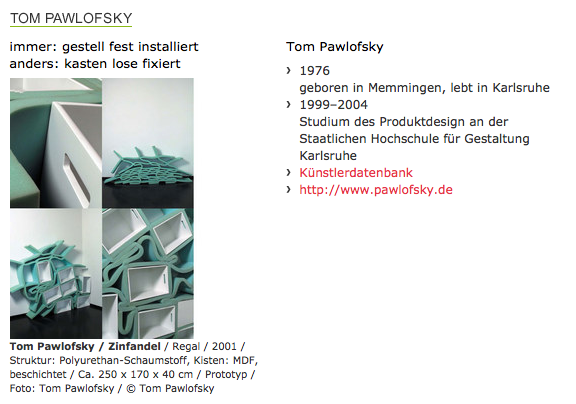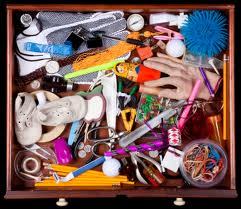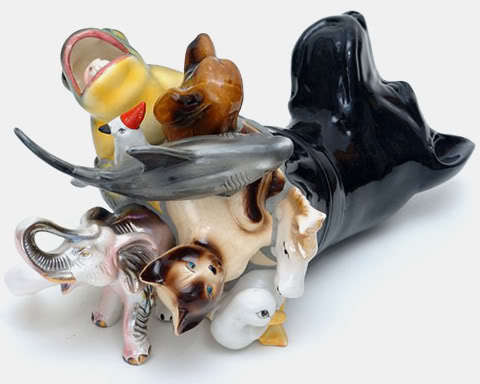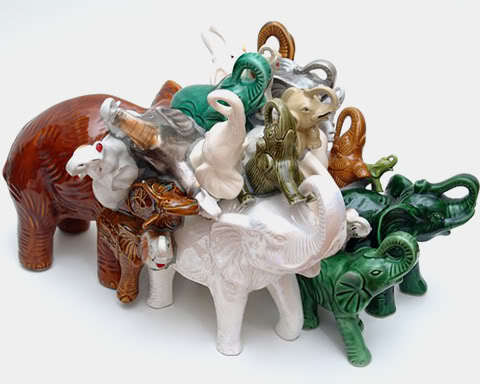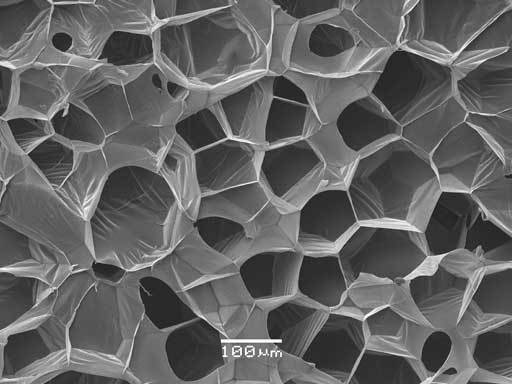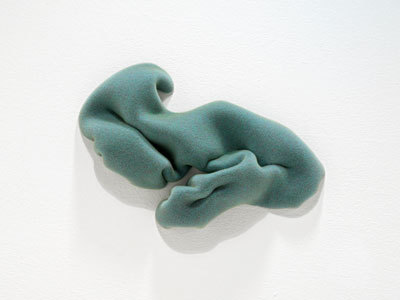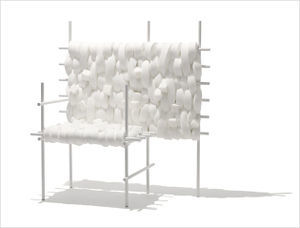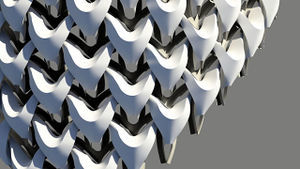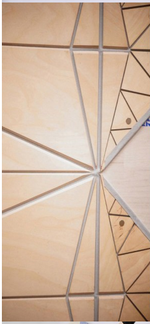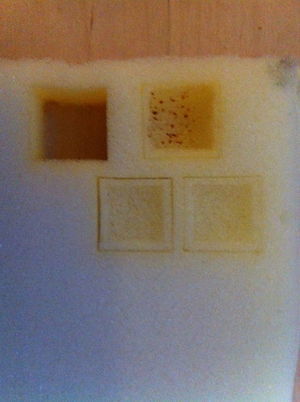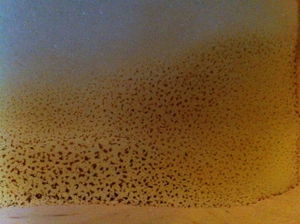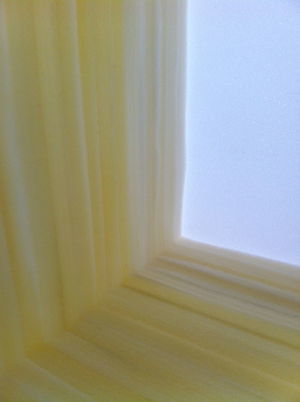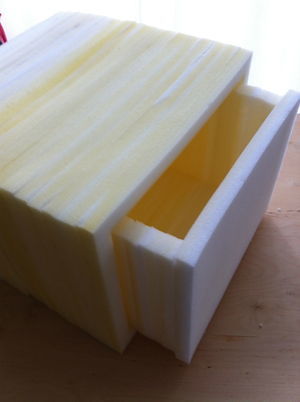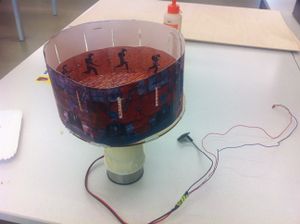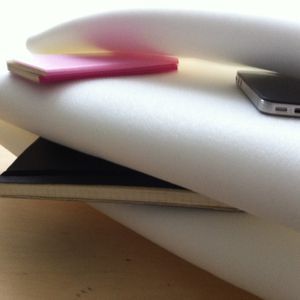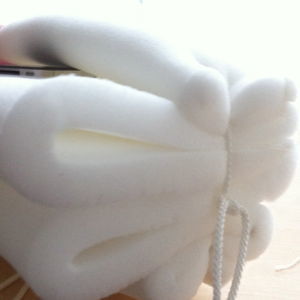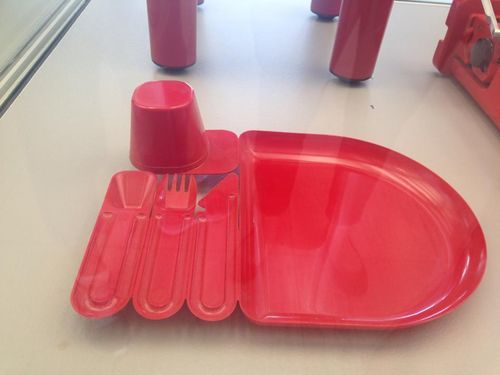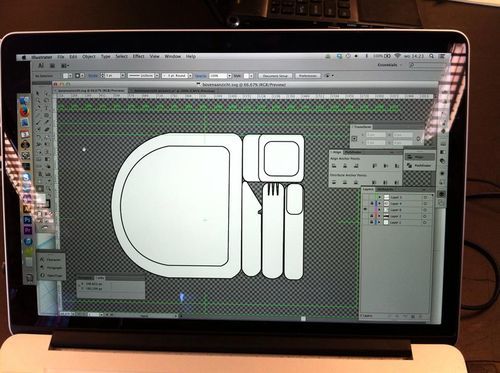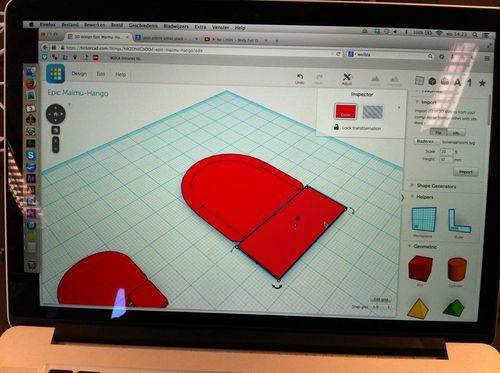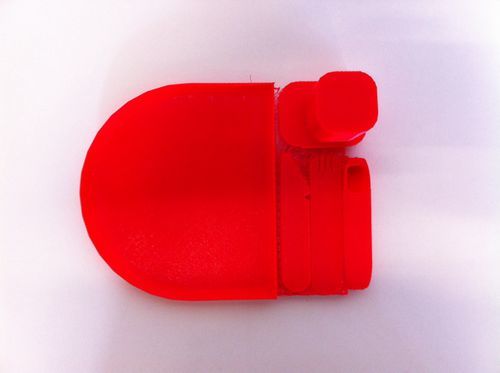Difference between revisions of "User:F.Mani"
| Line 147: | Line 147: | ||
| − | [[File:IMG 1025.jpg |300px]] | + | [[File:IMG 1025.jpg |300px]][[File:IMG 1024 2.jpg | 300px]] |
Revision as of 16:27, 6 October 2014
Projects/FantasticForgeries
I.
Chest of drawer - You can't lay down your memories Tejo Remy for Droog design 1991
Medium:Metal, paper, plastic, burlap, contact paper, and paint
Dimensions:55 1/2 x 53 x 20" (141 x 134.6 x 50.8 cm)
Tejo Remy
Tejo Remy works as a product, interior and public space designer together with Rene Veenhuizen in Utrecht, the Netherlands. Considering everything as material, Remy incorporates existing information, circumstances, or found goods into new situations, often bringing in more social contact or, telling the story of a particular place. Remy transforms the familiar, yet the feeling remains. Having collaborated with Droog since its inception with the 1991 classics Chest of drawers, Rag Chair and Milk bottle lamps, Remy has reached international acclaim. His commissioners and exhibitors include Museum of Art and Design in New York, Bartow-Pell Mansion Museum in New York, MoMA in New York, Stedelijk Musuem in Amsterdam, Museum Boymans van Beuningen in Rotterdam, ACME Gallery in Los Angeles and the Netherlands Ministry of Housing, Spatial Planning and the Environment.
Tejo Remy Drawer Project Assembly Event [[1]]
Do Chest Of Drawers by Mathieu Maingaurd, referencing the original Chest of Drawers
Drawers
Drawer for Tejo Remy's 100th Chest. Ted Noten was invited to make a special secret drawer for Tejo Remy's 100th 'You Can't Lay Down Your Memory'-chest. This anniversary chest was presented by Droog Design at Art Basel Miami Beach, December 2007.
Materials:
Flex foam
www.formx.nl
FlexFoam-iT III /1,25kg FlexFoam-iTIII is een zachte P.U. Schuim met een densiteit van 3 lb/ft³ = 48 kg/m³. Het is een dichte polyfoam die behoorlijk zwaar is en minimaal uitschuimt. Het heeft een gemakkelijke 1 op 1 (volume) mengverhouding.
set 1,25kg 29,95 EUR (Prijs exclusief 21% BTW)
PRICE COMPARISONS:
Flex Foam 20Euros/box
Foam cussion 5Euro/box
Silicon ca. 100Euros/box
Marjan van Aubel
Dutch designer Marjan van Aubel recently unveiled a set of ecologically crafted “Foam China” and a “Foam Cabinet” at Milan Design Week. Each piece is composed of an open-cell porcelain that looks and behaves very similar to polystyrene foam but without the chemical-ridden health hazards and environmental impact.
Read more: China Made of Open-Cell Porcelain Foam is Sustainable and Toxin-Free | Inhabitat - Sustainable Design Innovation, Eco Architecture, Green Building
Because porcelain is made from a combination of natural materials, it is considered eco-friendly and fine for human health. Porcelain is also very strong and is longer lasting than many other types of dishware. Marjan van Aubel‘s finished “foam” china is light-weight, ready for glazing, and encompasses a unique viscous quality.
Van Aubel also designed a Foam Cabinet to store his Foam China that is made out of the same open-cell porcelain. The designer’s choice of material gives the pieces an unfinished quality, which transforms preconceived flaws to into marks of prestige.
Read more: China Made of Open-Cell Porcelain Foam is Sustainable and Toxin-Free | Inhabitat - Sustainable Design Innovation, Eco Architecture, Green Building
Dewi Van De Klomp
These Soft Cabinets from Studio Dewi van de Klomp rethink the typical bookshelf or cabinet by constructing them out of foam rubber. Slots are cut into the dense material creating pockets of space for your dishes or books. The foam cushions itself around the object holding them in place. The more objects you place in each cabinet, the overall shape begins to change and the piece starts to droop, but not fall, slightly under the weight.
Form durch Gebrauch Schaumstoff dient beim Sitzmöbel als Polsterlage zwischen Gestell und Bezug. Bei Matratzen wird er bezogen, bevor er im Bett zum Einsatz kommt. Kurz: Schaumstoff ist kein Material, das aufgrund seiner Ästhetik geschätzt wird, sondern eine funktionale und kaschierte Notwendigkeit. Dewi van de Klomp empfindet das als Unrecht. Sie hat eine Stauraum-Kollektion aus unterschiedlichen Schaumstoffen entworfen. Das große Soft-Cabinet erinnert an einen traditionellen Küchenschrank und ist aus einer starken Materialvariante konstruiert. Es muss sich weniger der Schwerkraft als dem Alter beugen, das durch die Abnutzung sichtbar wird. Das kleinere Modell Small hingegen lässt sich dehnen. Wenn Teller und Tassen eingeschoben werden, wird seine tatsächliche Stärke deutlich. Die beiden Varianten verfügen über schmale Schlitze, in die sich Bücher und anderer Besitz klemmen lassen. Mit steigender Belastung werden sie sich zur einen oder anderen Seite neigen – stehen sie in direkter Nachbarschaft zu anderen Möbeln, werden sie sich an deren stabilen Wangen anlehnen. Jedes Modell wird zu einer individuellen Skulptur, geformt durch den Gebrauch. tp
II.
Books: Mediated Memories in the Digital Age - José van Dijck
Barrão Posted by Honey Filed in All entries, Art culptures made of porcelain and epoxy resin
Geschäumte Kunststoffe (Schaumstoffe) sind Werkstoffe, die aus einem festen Kunststoff und einem darin dispergierten Gas bestehen.
Geschäumtes Polystyrol wurde 1950 bei der BASF AG als Styropor® erfunden. Styropor® ist in seiner über 50jährigen Geschichte zum Synonym für alle Polystyrol-Schäume geworden. Makroskopischer Aufbau
Schaumstoffe weisen eine zellige Struktur auf. Es gibt offenzellige (schwammartige) und geschlossenzellige Schäume. Geschäumtes Polystyrol (PS-E) ist geschlossenzellig, d.h. die Wände der Zellen besitzen in der Regel keine Öffnungen zu den Nachbarzellen.
Make from the museum
Tuesday 2nd September: As a group we decided we wanted to create a 3D object. After looking at the Boijmans collection we chose a rubber vase and we wanted to scan this with the 123 catch app. This did not work with our object because of the reflection, transparent surfaces and blurry photo's. Most objects were not easy to reach because there were behind glass so we chose a other method and an other object. We chose the picknick set of Jean Pierre Vitrac (1977). We wanted to keep the function and the idea of the set but in a different implementation. We wanted to put together our picknick set with different plates and cutlery we found in shops or at home then make pictures of it and make a good 3D scan with the 123 catch app. After a discussion with the teachers we realized, that we first need to have the data. I order to share it on the wiki page. That for we had to change our idea. We came up with the idea to trace over the photos with illustrator and then transform it into a 3D model in tinker cad.
Wednesday 3rd September: We decided to make different versions for the exhibition on thursday. One 3D print model, with the same color and form but in a smaller version because with the printer the exact dimensions were not possible at the WDKA. Secondly we make our own picknick set molt with multifunction cutlery (3 in 1) and a square plate. We wanted to make a more minimalistic form but keep the original snap off idea of the pick nick set of Vitrac. We chose to use the vacuum forming technique. That we are doing tomorrow (Thursday) at the Stadsfablab in Utrecht. We want to make a couple of this object in different colors. That could work in mass production.
